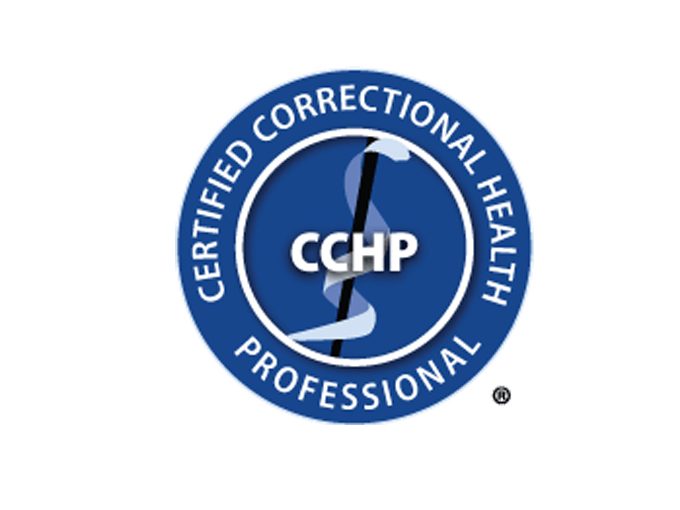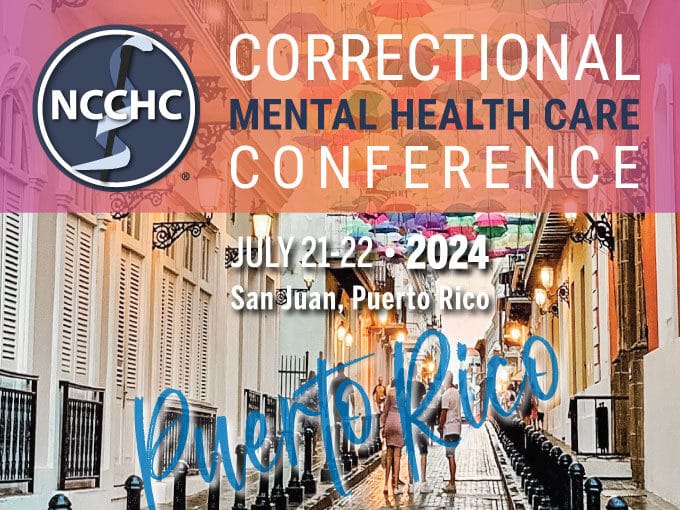
Standards Q&A: 75% Custody Health Training Requirement
Does the 75% requirement refer to all custody staff or only those working during
Home A Major Step Forward for Opioid Treatment in Corrections
By Brent Gibson, MD, MPH, CCHP-P
Managing Director, NCCHC Resources, Inc.
According to the Substance Abuse and Mental Health Services Administration, 24% to 36% of individuals with a heroin use disorder (over 200,000 individuals) pass through American correctional facilities annually, and an estimated 17% of state prison inmates and 19% of jail inmates report regularly using opioids. Roughly 30% to 45% of inmates report suffering from serious withdrawal symptoms or an inability to control their use, indicative of severe symptoms of drug dependence.
Buprenorphine: an imporant consideration
Methadone, a powerful agonist, is perhaps the best-known medication for treating opioid use disorder. It is heavily regulated and providers must have special licensure to use it to treat OUD. For more than 20 years, physicians—and now other providers—have had buprenorphine as another effective medication option that might be effective treatment for some patients. it doesn’t necessarily replace methadone, but should be a medication consideration, especially in light of what I describe below.
Buprenorphine is sold under various formulations and trade names such as Subutex, Suboxone, Zubsolv, Bunavail, Probuphine. It is pharmacologically described as a partial opioid agonist, which means that it stimulates the central nervous system in a way that is similar to full opioid agonists such as methadone (and many other commonly prescribed pain medications). This quality makes it effective in treating the symptoms of withdrawal. Because of its agonist properties, buprenorphine treats all opioid-related symptoms.
DATA 2000 waiver
Originally, the Drug Addiction Treatment Act of 2000 (DATA 2000) enabled physicians who met certain qualifications to treat either 30 or 100 patients with buprenorphine at any one time. Over time, restrictions have been loosened and more practitioners are eligible to prescribe it. On April 1, 2020, the Substance Abuse and Mental Health Services Administration notified qualified practitioners that they are potentially eligible to treat up to 100 patients in the first year if they meet certain criteria, and encouraged all DATA 2000 waivered providers to consider whether their limits could be increased.
Special Circumstances and Correctional Health Care
As the legal framework surrounding treating the opioid addicted has evolved, some specific changes could be highly impactful for jails and prisons. As outlined in an excellent issue brief newly released by Health Management Associates, the number of patients that may be served is very limited—in general, 30 patients at any one time during the first year of a waiver. Limits are increased for higher levels of training (e.g., board certification in addiction medicine). Importantly for correctional settings, limits are also increased if treatment occurs in a qualified practice setting and this increase applies to nonphysician prescribers. A QPS is very specifically defined (see the issue brief), but may be within reach for many correctional settings.
Another potential avenue for treating an even larger number of patients is to apply for an emergency increase in the number of patients that can be treated in a correctional institution. Like a QPS, emergency circumstances are specific and prescribed within the law. Despite this, many jails and prisons may meet these criteria, even if temporarily or while seeking a more permanent expansion of their capabilities. Other options for temporary prescribing may be used while approval for expanded patient number is pending, as described in the issue brief.
The buprenorphine issue brief illustrates steps prisons and jails can take to optimize prescribing capacity and make real progress in the fight against opioid use disorder.
Dr. Gibson joins the authors of the issue brief and other experts in a webinar (now available on demand), Evidence-Based Treatment of Opioid Use Disorder in Correctional Settings: What Every Clinician Should Know.
Additional resource:
Medications to Treat Opioid Use Disorder Research Report from National Institute on Drug Abuse


